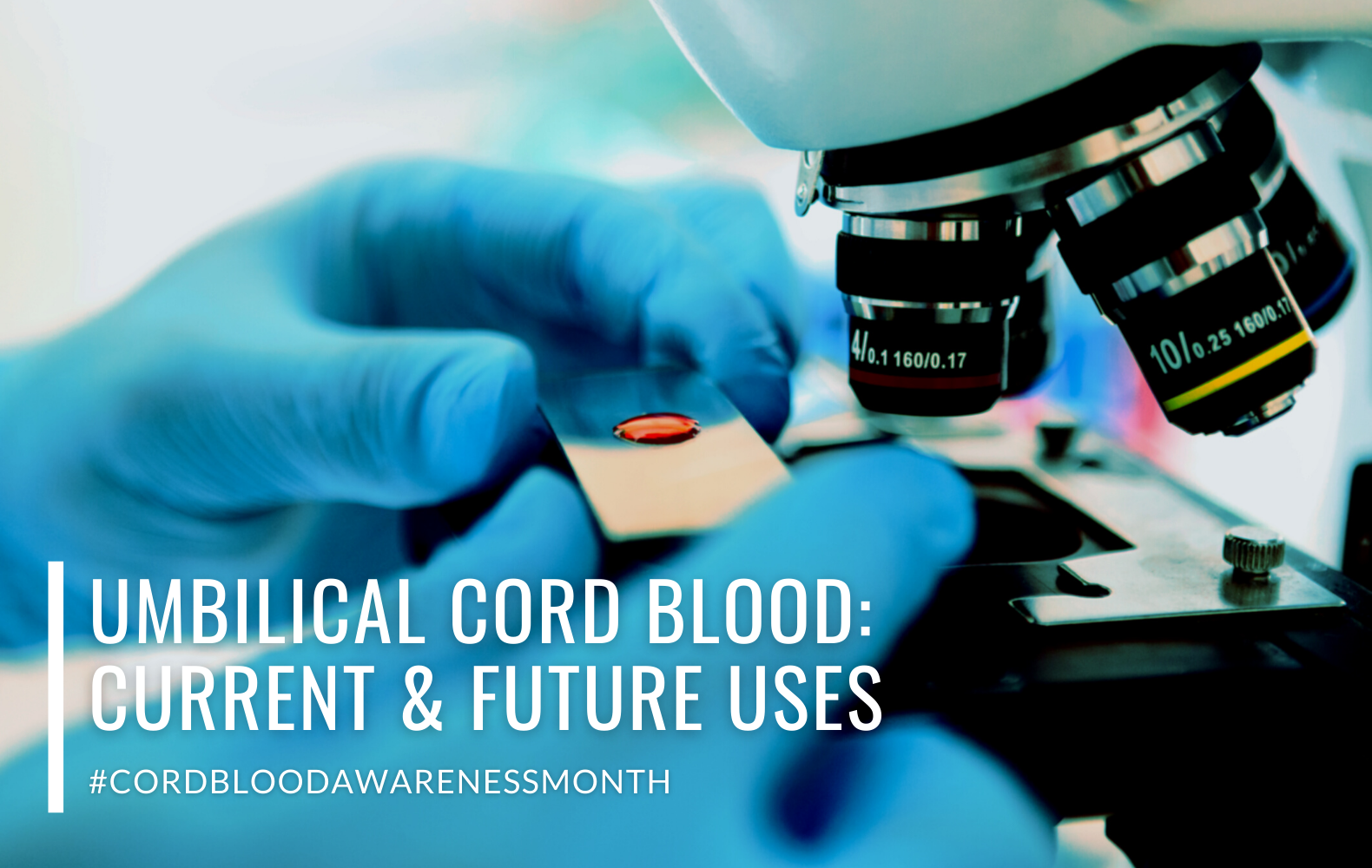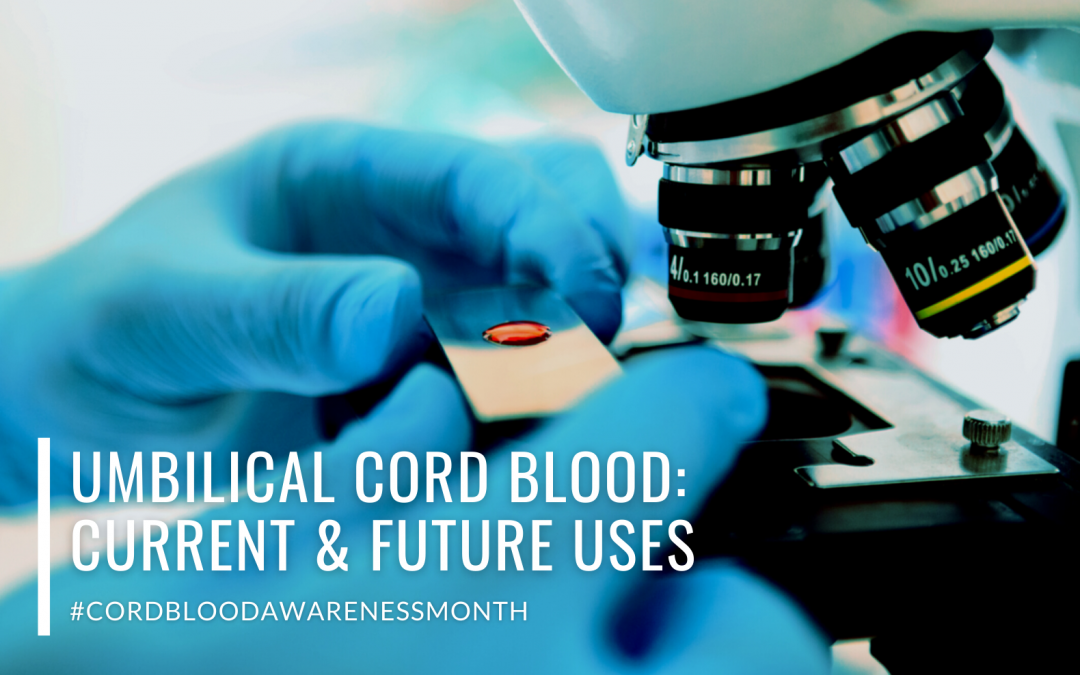
Since the discovery of umbilical cord blood stem cells in 1974, there have been more than 40,000 transplants worldwide. Many of these procedures have been life-saving, helping patients recover from deadly conditions like leukaemia and multiple myeloma.
But cord blood stem cells may have an even brighter future, with dozens of clinical trials underway that may lead to new treatments for heart disease, diabetes, Alzheimer’s disease and other conditions. Some researchers believe that the regenerative potential of stem cells is about to revolutionise the world of medicine.
In this article, we’ll share some of the current and future uses of cord blood stem cells. It will help you understand why cord blood stem cells are a precious medical asset which should be preserved for your family’s health.
What Are Umbilical Cord Blood Stem Cells?
The umbilical cord is responsible for transporting nutrients from a pregnant woman’s placenta to her growing foetus. These nutrients include hormones, growth factors, oxygenated blood, and of course — stem cells.
Stem cells are used to create the cells that grow the foetus. They are quite literally the building blocks of the human body. There are several types of stem cells found in umbilical cord blood. However, the stem cells that are the target of most research are:
- Hematopoietic stem cells (HSCs)
HSCs can change into any type of blood cell. They are currently the most commonly used type of stem cell, capable of treating many forms of immune disorders, cancer, metabolic disorders, and blood disorders. - Mesenchymal stem cells (MSCs)
MSCs are multipotent stem cells, which means they are capable of turning into a variety of cell types. This includes myocytes (muscle cells), osteoblasts (bone cells), chondrocytes (cartilage cells), and adipocytes (fat cells). MSCs are currently the focus of many research projects in the field of regenerative medicine. This field focuses on the “process of replacing, engineering or regenerating human or animal cells, tissues or organs”.
Current Uses of Stem Cells
Over 85 different conditions are currently treated using cord blood stem cells. This number is expected to dramatically increase in coming years given the incredible result from recent clinical studies. The conditions which are currently treatable using stem cells include:
Blood Cancer
Many forms of blood cancer are treated using a combination of umbilical cord blood stem cells and chemotherapy / radiotherapy. Doctors will use targeted chemotherapy / radiotherapy to kill the mutated cells in a patient’s bone marrow that are responsible for their cancer. They then give the patient a HSC transplant to restore their body’s ability to produce healthy blood cells. Some of the types of cancers treated with cord blood stem cells include:
- Hodgkin’s Lymphoma
- Non-Hodgkin’s Lymphoma (Burkitt’s Lymphoma)
- Acute Lymphoblastic Leukemia (ALL)
- Acute Myelogenous Leukemia (AML)
- Acute Biphenotypic Leukemia
- Acute Undifferentiated Leukemia
- Chronic Lymphocytic Leukemia (CLL)
- Chronic Myelogenous Leukemia (CML)
- Juvenile Chronic Myelogenous Leukemia (JCML)
- Juvenile Myelomonocytic Leukemia (JMML)
- Chronic Myelomonocytic Leukemia (CMML)
- Neuroblastoma
- Retinoblastoma
- Medulloblastoma
- Multiple Myeloma
- Primary Plasma Cell Leukemia (PCL)
- Secondary Plasma Cell Leukemia PCL)
- Waldenstrom’s Macroglobulinemia
Blood Disorders
There are dozens of blood disorders which interfere with the body’s ability to produce healthy plasma, platelets, red blood cells, or white blood cells. These conditions can be treated in a similar way to blood cancer, by eliminating the cells responsible for the malformed blood cells, then repopulating with cord blood stem cells. Some of the blood disorders often treated with cord blood include:
- Aplastic Anemia
- Congenital Dyserythropoietic Anemia
- Fanconi Anemia
- Paroxysmal Nocturnal Hemoglobinuria (PNH)
- Inherited Red Cell (Erythrocyte) Abnormalities
- Beta Thalassemia Major (also known as Cooley’s Anemia)
- Diamond-Blackfan Anemia
- Pure Red Cell Aplasia
- Sickle Cell Disease
- Inherited Platelet Anomalies
- Amegakaryocytosis / Congenital Thrombocytopenia
- Glanzmann Thrombasthenia
Immune Disorders
Immune disorders can impact the functioning of the immune system, reducing its ability to protect the body against disease or infection. Cord blood stem cells can be used to rebuild the immune system. Some of the conditions often treated using stem cells include:
- Cartilage-Hair Hypoplasia
- Gunther’s Disease (Erythropoietic Porphyria)
- Hermansky-Pudlak Syndrome
- Pearson’s Syndrome
- Shwachman-Diamond Syndrome
- Systemic Mastocytosis
- Inherited Immune System Disorders: Severe Combined Immunodeficiency (SCID)
- SCID with Adenosine Deaminase Deficiency(ADA-SCID)
- SCID which is X-linked
- SCID with absence of T & B Cells
- SCID with absence of T Cells, Normal B Cells
- Omenn Syndrome
- Neutropenias
- Infantile Genetic Agranulocytosis (Kostmann Syndrome)
- Myelokathexis
- Inherited Immune System Disorders–Other
- Ataxia-Telangiectasia
- Bare Lymphocyte Syndrome
- Common Variable Immunodeficiency
- DiGeorge Syndrome
- Leukocyte Adhesion Deficiency
- Lymphoproliferative Disorders
- Lymphoproliferative Disorder, X-linked (also known as Epstein-Barr Virus Susceptibility)
- Wiskott-Aldrich Syndrome
Metabolic Disorders
Several metabolic disorders can be treated with cord blood stem cells, including:
- Hurler’s Syndrome
- Osteogenesis Imperfecta
- Krabbe Leukodystrophy
- Osteopetrosis
- Cerebral X-Linked Adrenoleukodystrophy
Future Uses of Stem Cells
There are currently hundreds of clinical trials focussed on cord blood stem cells. Most of these studies are looking at regenerative medicine, with scientists using stem cells to repair, grow, or replace humans cells, tissues, and organs. It is an innovative and exciting field that might lead to cures for a variety of conditions. Some of the most promising research developments have involved:
- Autism
There is some evidence to suggest that some autism cases are related to immune system dysfunction. A group of American researchers is currently using cord blood infusions to address this issue by modulating inflammatory responses in the brain. - Brain Injury
Currently, there are over 55 trials looking into the use of stem cells for treating brain injuries. The large number of trials is a result of many studies already showing that stem cells may be highly effective at treating brain injuries. - Multiple Sclerosis
There are even more trials looking at the effect of stem cell transplants on patients with multiple sclerosis. As of last year, there were 193 clinical trials underway. - Cerebral Palsy
Many research teams are conducting trials to determine if cord blood stem cells can improve brain function in patients with cerebral palsy. This includes a project headed by Joanne Kurtzberg of Duke University, a renowned stem cell pioneer. - Alzheimer’s Disease
Researchers have already found that stem cells can improved cognition in animal tests and are excited by the prospect that they can heal the brains of Alzheimer’s patients. - Cystic Fibrosis
Cystic fibrosis is a devastating life-threatening disease affecting the lungs. Researchers believe that stem cells can be used to reduce the inflammation which causes the cystic fibrosis symptoms. - Hearing Loss
There have already been several clinical trials which suggest cord blood stem cells can treat sensorineural hearing loss. - Bone Fractures
Transfusions of cord blood derived MSCs may be able to speed up the healing of bones, according to researchers. - Burns
Skin grafts which are infused with stem cells have been found to promote healing in burn patients. Patients experience less inflammation and less scarring. - Stroke
Researchers suspect that stem cells may be able to improve brain connectivity in patients who have recently suffered a stroke. - Arthritis
Arthritis is a devastating debilitating disease which affects millions of people worldwide. Some researchers believe that stem cells may be used to reduce the inflammation associated with different forms of arthritis. - Crohn’s Disease
Recent clinical trials have used stem cells to ‘reboot’ the immune system, reducing inflammation and curing Crohn’s Disease. - Heart Attack
A study published by researchers in the UK has shown that cord blood stem cells may be useful for helping the heart heal after a heart attack. - Liver Disease
Researchers have used animal models to discover that transplanted Hepatic progenitor cells (HPCs) can heal liver damage. - Diabetes
Animal models have already shown that stem cells can be used to help the pancreas generate insulin, which may lead to a treatment for diabetes. - Spinal Cord Injury
There is some evidence to suggest that stem cells may be able to regenerate damaged tissue in the spine, repairing spinal cord injuries.
As you can see, times are very exciting in the world of stem cell research. By preserving your children’s umbilical cord stem cells, you can maximise the chances that your family can take advantage of the revolutionary medical breakthroughs now occuring. You can also protect your family against the many different cancers, metabolic diseases, blood disorders, and immune diseases.
Sources
https://pubmed.ncbi.nlm.nih.gov/28928957/
https://www.cordblood.com/how-its-used/current-future-uses
https://cells4life.com/multiple-sclerosis-and-stem-cells/
https://cells4life.com/autism-and-stem-cells/
https://cells4life.com/cerebral-palsy-and-stem-cells/
https://cells4life.com/alzheimers-disease-and-stem-cells/
https://cells4life.com/hearing-loss-and-stem-cells/
https://cells4life.com/bone-fractures-and-stem-cells/
https://cells4life.com/burns-and-stem-cells/
https://cells4life.com/stroke-and-stem-cells/
https://cells4life.com/heart-attack-and-stem-cells/
https://cells4life.com/type-1-diabetes-and-stem-cells/
{{cta(‘7d7cc8da-ed20-48a8-8ef3-e2429767260f’)}}


